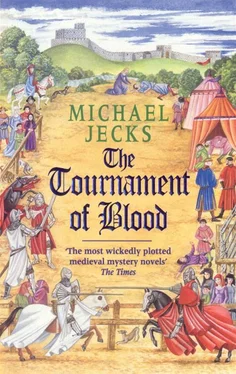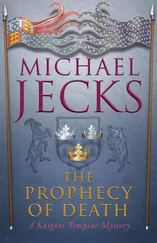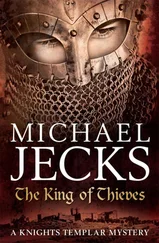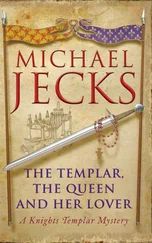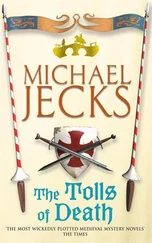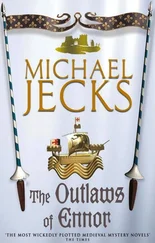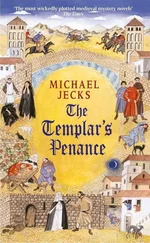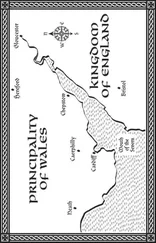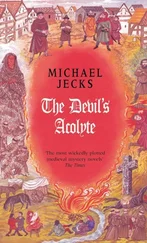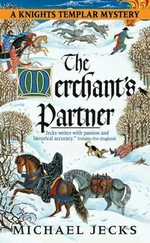Michael Jecks
THE TOURNAMENT OF BLOOD
2001
For Katie Marjorie Bond Jecks, with all a father’s love.
Aketon
A long-sleeved garment, of fustian or similar thick cloth, often padded with wool and sewn like a quilt, which was worn over the shirt but beneath the mail to protect a man-at-arms.
À outrance
Fighting under conditions of war. In a tournament this meant using weapons of war: sharp sword, sharp lance, dagger and all other equipment including full armour.
À plaisance
Fighting for show or entertainment. When demonstrating their speed and prowess, knights often used bated, or blunted, weapons to reduce the danger of bloodshed.
Banneret
A knight who was entitled to command other knights and men-at-arms under his own banner; also a title of knighthood conferred by the King for valour on the battlefield.
Béhourd
This was a limited hastilude between squires or training knights, occasionally an impromptu response to a celebration. Sometimes events had the knights wearing cuir bouilli and fighting with whalebone swords, such as at the ‘Joust of Peace’ at Windsor in 1278.
Ber frois
The grandstands built to accommodate ladies, nobles and the wealthier classes. They would have surrounded the main fighting area, forming an oblong so that knights could run courses against each other directly in front of the spectators.
Coat armour
Over the pair of plates a knight would wear a decorative tunic upon which he would have his heraldic symbols, his ‘arms’. From this the tunic came to be called coat armour . It didn’t offer protection from attack, it only emphasised the nobility of the wearer. Also called gypon .
Collée
This was the term given to the light blow from the hand, according to the Ordène de Chevalerie and other contemporary books dealing with knighthood. The collée was given by the man who had girded the new knight with his sword, and commonly it was given by the fellow’s lord. It was only rarely given by the King himself except after a battle or tournament, at which times it was worthwhile making knights to reward them. The Church tried to take over the dubbing of knights, just as they took on the responsibility of crowning kings, in an attempt to demonstrate that priests were superior to warriors, but they did not succeed.
Commencailles
The initial stage of a mêlée or medley in which a few knights selected for their skill would display their abilities in preliminary skirmishes before the main fight.
Course
One run through the lists , so one attempt to hit an opposing knight.
Cuir Bouilli
Leather boiled, shaped and hardened to form a solid, but light covering, used to protect both men and horses.
Diseur
Just as with any sport, rules were invented and must be monitored by professional judges. These referees were called diseurs .
À l’estoc
Literally ‘at the point’ of a sword. Estoc was sometimes used to mean a vicious thrust into the chest cavity, under the ribs and leading upwards into heart and lungs: a killing blow.
Gypon
See Coat armour above.
Harbinger
The members of a household sent on before the Lord’s arrival in a new location to prepare the way for him, ensuring that rooms were available at inns en route and finally making the destination ready. Often a rich man like Lord Hugh would have harbingers for his servants as well.
Hastilude
Literally ‘spear-play’ from the Latin hastiludium : this word was the common term for a joust in the 1300s. I’ve used ‘tournament’ and ‘joust’ in the story because they are better understood by readers in the 2000s.
Hauberk
The name given to the coat of mail worn over the aketon but beneath the pair of plates .
Heralds
Heralds grew to importance largely through tournaments, because it was they, the experts in reading heraldic insignia, who must confirm a man’s lineage to ensure he was entitled to participate, and call out his name as the knight rode into the lists to joust . Afterwards it was the heralds who proclaimed the honour and prowess of the winners.
Heraldry
As warfare and the mêlée required ever stronger armour and men’s faces became concealed, knights resorted to symbols painted upon shields, pennons and banners so that their footsoldiers and friends could recognise them. This was the basis of heraldry , which developed into a systematic means of displaying a man’s heredity.
Joust
Generally this meant single combat on horse or on foot. Commonly in this period, a joust consisted of: three courses run with the lance, three with swords and three more (if both competitors could still stand!) with axes. More recently, of course, a joust has come to mean hastilude .
Lists
Once the mêlée gave way to the rather safer idea of individual knights running courses against each other, it was desirable that the clash should take place before the spectators. There was, after all, little point in a knight displaying brilliant prowess in a field half a mile away where no one could see him. Thus lists were created: an enclosed space in which the fighting took place.
Mêlée
Also called a medley , this was a free-for-all: in essence a battle. All weapons were genuine and there were few rules. The thrill for the participants came from booty: seizing another knight’s weapons, horse and armour, as well as taking the man hostage and demanding a ransom. Those who held the field at the end of the day were victors, while the losers must run to the money-lenders.
Misericorde
Literally ‘compassion’ or ‘mercy’, this name applied to small shelves for monks to rest on and save their legs during long services, as well as rest homes for monks to recover their health. However, it was also the name of a knight’s dagger used to deliver the coup de grâce to a wounded comrade.
Pair of plates
The name given to the stout armour worn over the hauberk . It comprised a heavy-duty cloth or leather garment which had, on the inner surface, a series of plates stitched or riveted in place. Often the rivet-heads could be seen, shaped like flowers for decoration. Inside, the plates overlapped to give greater protection. The pair of plates was replaced by large individual plates of armour.
Tenant
Occasionally a knight wishing to prove his prowess and strength would issue a challenge to all-comers, promising to fight whomsoever took up his challenge. He was the tenant .
Tilt
To prevent horses running into each other while charging, a rope was sometimes slung between two posts, a cloth draped over it, and the horses were supposed to run their courses on the right, with the knights holding their lances to threaten the man approaching on their left. In later years (from about 1420) the rope was replaced by a more substantial, low wooden fence.
Читать дальше
